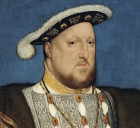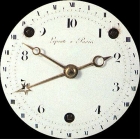-

Learning from a pandemic
Article
In order to contextualise and make sense of the Covid-19 pandemic, Verity Morgan worked with her school's long-standing partner school in Ghana to devise an innovative project combining history and science, past and present. In this article, Morgan sets out the rationale for the project, her detailed adaptation of a British Council...
Click to view -

Using individuals' stories to help GCSE students to explain change and causation
Article
Should we, and how do we, develop in our students a sense of period – or a series of senses of period – in a thematic study spanning a thousand years? This was the problem faced by Matthew Fearns-Davies in preparing for the GCSE 'Health and the People' paper. He shows...
Click to view -

'One big cake': substantive knowledge of the mid-Tudor crisis in Year 7 students' writing
Article
While looking to revamp his department's Year 7 enquiry on the Tudors, Jack Mills turned to historiographical debates regarding the 'mid-Tudor crisis' to inform his curricular decision making. In doing so, Mills noted that the debate hinged on interpretations of substantive concepts such as 'crisis'. He therefore also drew on previous...
Click to view -

Transatlantic slavery – shaping the question, lengthening the narrative, broadening the meaning
Article
Nathanael Davies explains his radical rethink of how to teach transatlantic slavery. He explains how he came to question his earlier approach of focusing on the causation of 'abolition' and 'emancipation' and, instead, allowed scholarship, sources and his own students' meaning-making to guide him to a different, and much more...
Click to view -

Film: What's the wisdom on... Change and continuity
Article
We've been talking to our secondary school members and we know how difficult life is for teachers in the current circumstances, so we wanted to lend a helping hand. 'What's the wisdom on…' is a new and already popular feature in our secondary journal Teaching History and provides the perfect stimulus for a...
Click to view -

Teaching Year 9 to argue like cultural historians
Article
Alex Benger asks whether the mode of enquiry adopted by cultural historians, the construction of webs of past meaning from past perspectives, is underexplored in school history. Benger used a cultural history approach in his building of an enquiry for Year 9 around one man's experience of the First World...
Click to view -

What's The Wisdom On... change and continuity?
Article
When it comes to historical change and continuity, what are history teachers asking pupils to think about and do? What's the Wisdom On... is a short guide providing new history teachers with an overview of the 'story so far' of practice-based professional thinking about a particular aspect of history teaching. It...
Click to view -

Cunning Plan 178: How far did Anglo-Saxon England survive the Norman Conquest?
Article
Cunning Plan for using the metaphor of a tree to help students characterise the process of change and engage with a historian's argument. In this Cunning Plan, Eve Hackett sets out how she used a recent work of history about the Norman Conquest as inspiration for her teaching of Year...
Click to view -

Dealing with the consequences
Article
Do GCSE and A-level questions that purport to be about consequences actually reward reasoning about historical consequences at all? Molly-Ann Navey concluded that they do not and that they fail to encourage the kind of argument that academic historians engage in when reaching judgements about consequences. Navey decided that it...
Click to view -

From flight paths to spiders' webs: developing a progression model for Key Stage 3
Article
The disapplication of level descriptions in the 2014 National Curriculum has spurred many history departments to rethink their approach not only to assessment but to their models of progression. In this article Rachael Cook builds on the recent work of history teachers such as Ford (TH157), Hawkey et al (TH161),...
Click to view -

'Man, people in the past were indeed stupid'
Article
In this article, which is based on Huijgen's PhD dissertation Balancing between the past and the present, Tim Huijgen and Paul Holthuis present the results of an experimental method of teaching 14–16-year-old students to contextualise their historical studies in a different way. In the four lessons described, students' initial reactions...
Click to view -

'Through the looking glass'
Article
Danielle Donaldson began to notice the verbs that her pupils used to express their ideas. She noticed that more successful pupils were using carefully chosen verbs to express their conceptual thinking about causation or change, and wondered how this might relate to, and reflect, the breadth and security of their...
Click to view -

Anything but brief: Year 8 students encounter the longue durée
Article
Inspired by The History Manifesto, Suzanne Powell describes in this article her rationale for expanding her students' horizons by asking them to think about change, similarity and difference on a grand scale. She sets 'big history' into its curricular context, and shows the way in which her students could, and...
Click to view -

From road map to thought map: helping students theorise the nature of change
Article
Warren Valentine was dissatisfied with his Year 7 students' accounts of change across the Tudor period. Fixated with Henry VIII's wives, they failed to reflect on or analyse the bigger picture of the whole Tudor narrative. In order to overcome this problem, his department created a 'thought-map' exercise in which...
Click to view -

Triumphs Show 167: Keeping the 1960s complicated
Article
During her PGCE year, it became evident to Rachel Coleman just how much pupils struggled with the complicated nature of history. They were troubled in particular by the lack of definitive answers, by the range of perspectives that might be held at the time of a particular event or development...
Click to view -

Inverting the telescope: investigating sources from a different perspective
Article
As historians, we are dependent on evidence, which comes in many varieties. Rosalind Stirzaker here introduces a project which she ran two years ago to encourage her students to think about artefacts in a different way. They have examined randomly preserved artefacts such as those of Pompeii, and sets of...
Click to view -

Why are you wearing a watch? Complicating narratives of economic and social progress
Article
Frustrated by the traditional narrative of the industrial revolution as a steady march of progress, and disappointed by her students' dull and deterministic statements about historical change, Hannah Sibona decided to complicate the tidy narrative of continual improvement. Inspired by an article by E.P. Thompson, Sibona reflected that introducing her...
Click to view -

Cunning Plan 163.1: GCSE Thematic study
Article
I started teaching 'crime and punishment through time' thematically a few years ago. I was teaching it as a Schools History Project 'study in development'. We had moved from 'medicine through time' in order to keep things fresh. After six times through the content, much as I loved it, crime,...
Click to view -

New, Novice or Nervous? 162: GCSE Thematic Study
Article
Thematic studies have been a long-standing feature of the Schools History Project (SHP) GCSE specifications in England and Wales; but for teachers of 'Modern World' GCSE specifications, the thematic study in the new GCSE specifications for teaching in England from September 2016 is unfamiliar territory. Perhaps you are entirely new...
Click to view -

Climate change: greening the curriculum?
Article
Inspired by the news that Bristol had become the UK's first Green Capital, Kate Hawkey, Jon James and Celia Tidmarsh set out to explore what a 'Green Capital' School Curriculum might look like. They explain how they created a cross-curricular project to deliver in-school workshops focused on the teaching of...
Click to view




















0 Response to "The Theme of Continuity and Change"
Postar um comentário